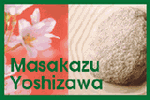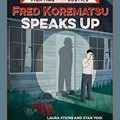As a respected composer, arranger and master of shakuhachi, other Japanese flutes, taiko, clarinet and piano, Masakazu Yoshizawa demonstrates how excellence can be achieved through an obsession with technique and structure. When he was first introduced to music, he remembers tediously hand-copying musical scores over and over again to understand the underlying structures and rhythms.
In his elementary school, every student was required to choose an instrument, and Yoshizawa first dedicated himself to the accordion—and then revealed his uncanny musical gifts by quickly learning the intricacies of the piano, trumpet and clarinet.
Yoshizawa came to America with little idea of where his musical talents would lead. The day he arrived he saw a publicity flyer in the Little Tokyo section of Los Angeles for a performance of the Asian American Orchestra. He called the musical director and said he was a clarinet player who had just arrived from Japan. The director asked if he had a tuxedo and invited him to join the orchestra in its performance that night. Yoshizawa was a hit—and has performed continuously and with great variety ever since that auspicious debut.
The scope of Yoshizawa’s talents are reflected to some degree in his personal library, which contains an abundance of newspaper articles, programs, press releases, letters, photographs, and other documents that provide a glimpse into what appears to be dazzling contradictions in a single musical life.
In one photograph, taken in a recording studio, a variety of Japanese flutes stand next to Yoshizawa waiting for their place in a composition. In another, John Williams has his baton at the ready for musicians Itzhak Perlman, Yo-Yo Ma, Masayo Ishigure on the koto, and Yoshizawa on the shakuhachi. Over the years, Yoshizawa has lent his musical talents to dozens of film scores, including Jurassic Park, The Joy Luck Club, The Last Samurai, The Karate Kid, and Memoirs of a Geisha. To this day, the recording studio remains one of Yoshizawa’s favorite places in which to practice his art.
While continuing his journey through countless musical genres in contemporary America, Yoshizawa remains dedicated, at the same time, to the instruments of his youth. In his living room, he displays a head basket worn by Japanese flute players during the Tokugawa and later periods to disguise their identities. This head basket is an icon of the lone shakuhachi player in ancient Japan. Yoshizawa explains that “Japanese music is Japanese music and American music is American music. Different intentions and clear borders.” He is disciplined and explicit about the distinctions and the different traditions of each. “Otherwise,” he states, “musicians feel they can mix things up indiscriminately without honoring either art form.”
Never at rest, Yoshizawa generously contributes his versatile talents to contemporary jazz and bebop groups, to Jikken Kobo, an experimental music ensemble, and to “Ninja In the Studio” and The Grudge 2. He has also collaborated with Toru Takemitsu and other Japanese composers of serious contemporary music.
More recently, Yoshizawa formed his own ensemble, Kokin Gumi. Together with Hiromi Hashibe on the koto, Tateo Takahashi on the tsugara shakuhachi and Kenny Endo on percussion, Kokin Gumi is dedicated to demonstrating the range and beauty of traditional Japanese instruments through both ancient and contemporary compositions. Since its inception, the group has performed and recorded widely. Their recordings are available at the Japanese American National Museum Store.
* This article was originally published on the Japanese American National Museum Store Online in September 2007.
© 2007 Japanese American National Museum






